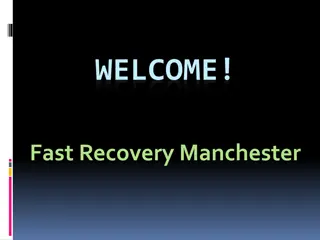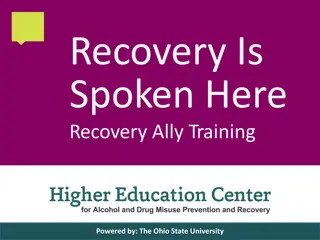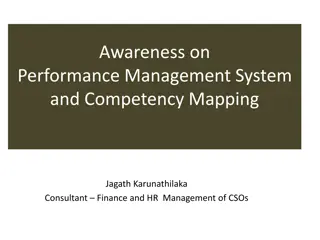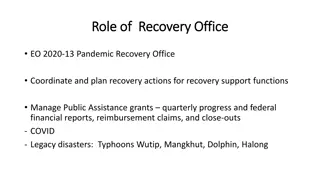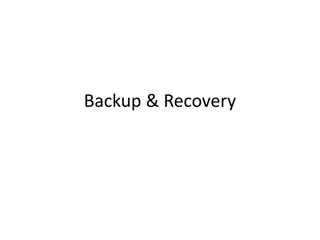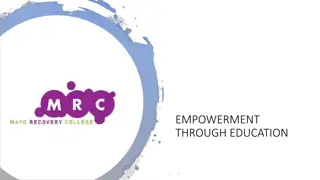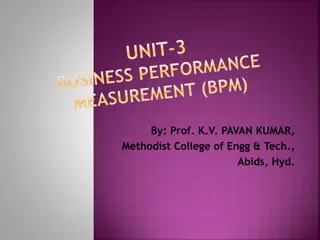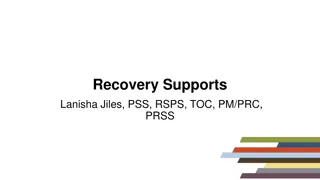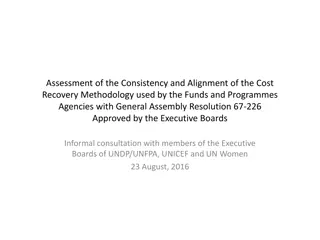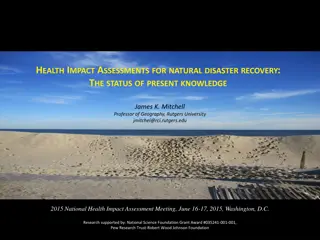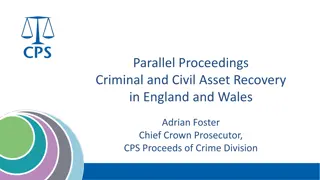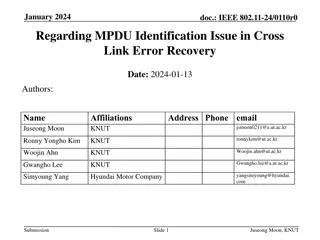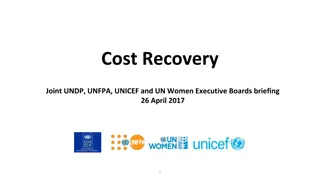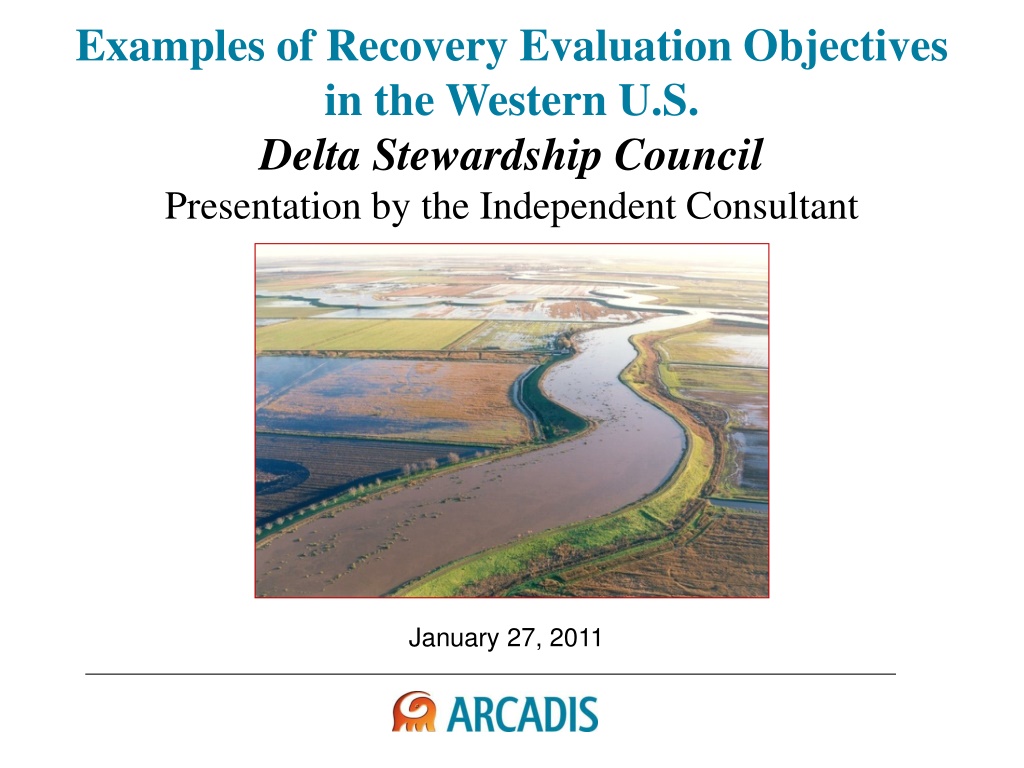
Western U.S. Delta Stewardship Council Recovery Evaluation Objectives
Explore examples of recovery evaluation objectives in the Western U.S., focusing on the Lower Columbia River Recovery and Subbasin Plan. Learn about science-based objectives, monitoring methods, adaptive management, and conservation measures for salmonid population recovery.
Download Presentation

Please find below an Image/Link to download the presentation.
The content on the website is provided AS IS for your information and personal use only. It may not be sold, licensed, or shared on other websites without obtaining consent from the author. Download presentation by click this link. If you encounter any issues during the download, it is possible that the publisher has removed the file from their server.
E N D
Presentation Transcript
Examples of Recovery Evaluation Objectives in the Western U.S. Delta Stewardship Council Presentation by the Independent Consultant January 27, 2011
Lower Columbia River Recovery and Subbasin Plan (1991-present) Science based objectives linked to restoration actions NOAA Viable Salmonid Population (VSP) framework for recovery objectives and status assessments Salmon/Steelhead Population Attributes abundance, productivity, and viability Plan includes specific strategies, measures, and actions Priority actions tailored to each subbasin: Restoring juvenile and adult passage at barriers Restoring estuary, floodplain, and riparian habitats Managing forests to protect and restore watershed processes Addressing immediate risks with short term habitat fixes
Lower Columbia River Adaptive Management DECISION MAKING CONSERVATION PLAN REVISIONS Conservation area design and management Conservation measures Monitoring design Research MULTI-SPECIES CONSERVATION PLAN IMPLEMENTATION AND FUNDING NEW KNOWLEDGE Research study results New technology Best available science Adaptive Management Cycle MONITORING System Post-development Potential scientific review node
Lower Columbia River Recovery and Subbasin Plan - Monitoring Regional agencies monitor two aspects of performance: Programmatic performance measures - used to track implementation and effectiveness Biological and environmental performance measures - used to track and evaluate restoration actions, to evaluate effectiveness and reduce uncertainty
Lower Columbia River Recovery and Subbasin Plan - Monitoring Biological status monitoring Population parameters (distribution, abundance, productivity, and diversity) Habitat status monitoring Habitat type, extent, quality and use Action effectiveness monitoring Monitors performance of management actions (measures response vs. intended effect) Implementation and compliance monitoring Monitors actions implemented
Specific Evaluations Supporting Ecosystem Recovery Objectives Extent and quality of habitat Do habitats exhibit the ecological functions to support salmon recovery ? Current fish use Are fish using those habitats ? Protection of critical habitats Are there effective protection programs ? Habitat acquisition programs Is there enough existing habitat to support species recovery ? Water quantity and timing of in-stream flows Are water flows sufficient in the streams and rivers ? Water quality Is the water contaminated ?
Puget Sound Salmon Recovery Program Vision Watershed based strategy supporting long-term functional ecosystem recovery, population viability, and stewardship Goals and Objectives Protect and restore nearshore and marine ecosystem processes Measure the viability of salmon populations and supporting critical habitats Develop strategies and actions to accomplish recovery Design regulatory programs to support protection of functioning habitats and processes
Puget Sound Recovery Program Habitat Specific Monitoring Needs
Lower Colorado River Multi-Species Planning Terrestrial species objectives Avoid/minimize/mitigate adverse impacts to covered species Create/maintain target habitat acreages for each species Aquatic species objectives Avoid/minimize/mitigate adverse impacts to covered species Create/maintain target habitat acreages and release target number of hatchery reared juvenile fish Avian and botanical species objectives Avoid/minimize/mitigate adverse impacts to covered species Create/maintain target habitat acreages for covered species
Projecting and Assessing Performance of Restoration Scenarios Performance Measure/Metric* A Ideal State Recorded trend B Possible outcomes under various restoration alternatives U L Duration of proposed restoration program Forecasted trend with no action t- t0 t+ Present Start of human disturbance Future Time (NRC, 2000)
Guiding Principles for Estuary Restoration Protect first restore second Do no harm Use natural processes to restore/maintain structure Incorporate fish life history Re-establish ecosystem connectivity and complexity Use history as a guide, but recognize irreversible change Establish performance criteria based on objectives and monitor Use best available science and employ a scientific peer-review process (Simenstad and Bottom 2002)
Desirable Delta Habitat Conditions Ecosystem Component Internal tidally mixed Delta flows Action Create upstream-downstream mixing without cross Delta flows 1 2 Slough networks Create natural drainage systems for marsh habitats 3 River inflows Develop fish-friendly flow regime 4 Tidal marsh Expand tidal marsh throughout Delta and Suisun Marsh 5 Open water Flood subsided islands in the Delta and diked marshlands in Suisun Marsh 6 Variable salinity Manipulate hydrodynamic regime where possible 7 Native species abundance Take species-specific actions 8 Activated floodplains Expand floodplain habitat and increase frequency of flooding 9 Water quality Reduce inputs of urban/agricultural pollutants 10 Cooler summer habitats Expand tidal marshes in areas with cooler water temperatures (Moyle et al. 2010)





